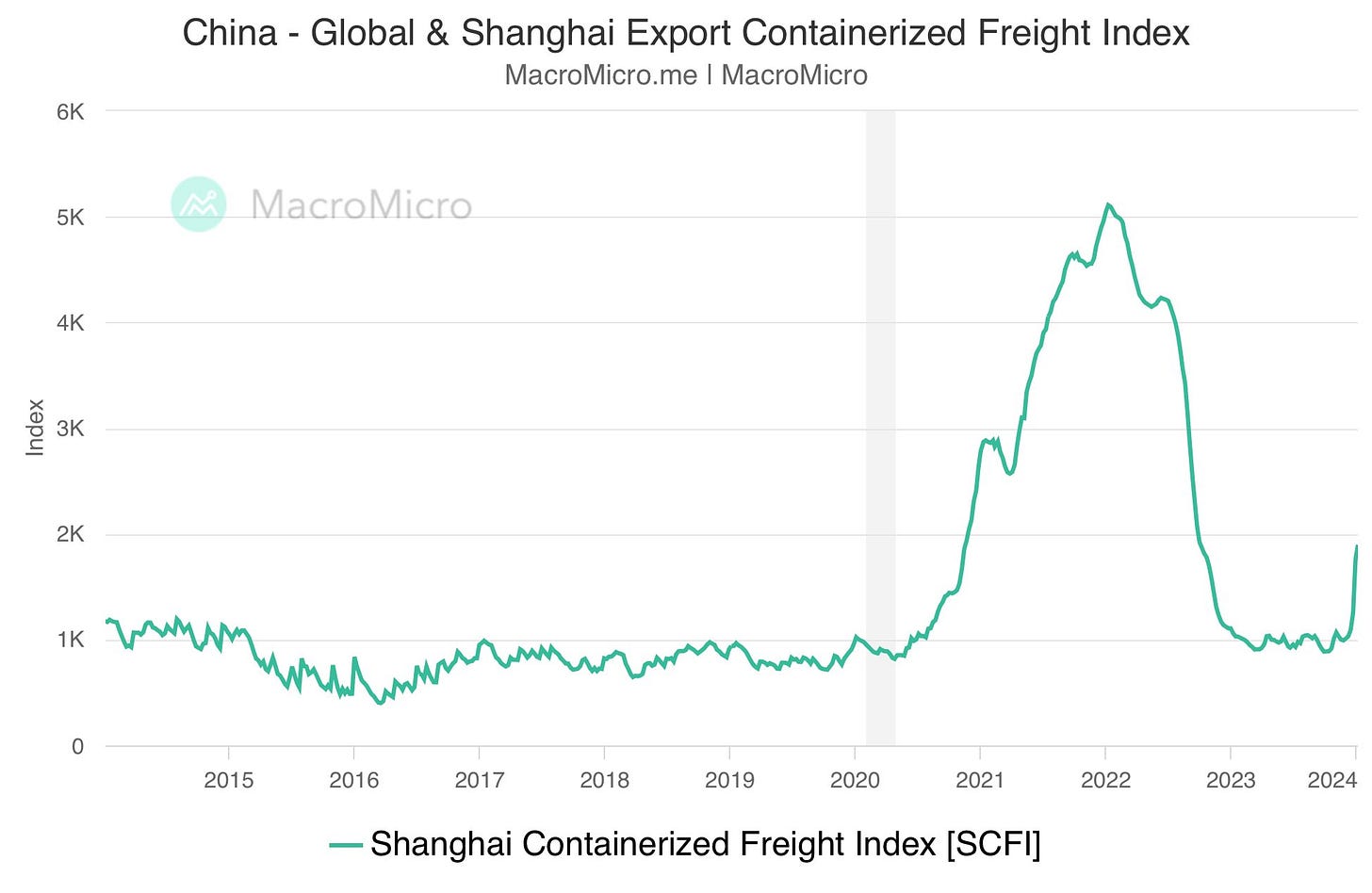All The Small Things: inflation, QT, options expiration
Paid subscriber analysis
We’re back with our exclusive paid content; the macro analyses that help us keep an eye on the big picture, in addition to all the weekly predictions we get from BASON.
It’s been a good start to the year for BASON, building upon a great ending of 2023. As usual, more on that on Tuesday.
Our last big weekly analysis delivered our view for 2024. With only two weeks gone by, the view obviously hasn’t changed, even though we did get some very interesting economic data and a few important signals over the past two weeks. All of these have driven more volatility and some strong sideways price action these past two weeks.
So today, let’s look at some of these signals, why they are important, and what’s potentially in store for next week, which could deliver a slight correction to markets. Specifically we’ll talk about:
CPI report: prices are getting sticky
Is the Fed ending quantitative tapering (QT) sooner than expected? There’s been a lot of talk of this ever since the FOMC minutes last week
The intersection between the Treasury and the Fed is as important as ever
Options expiration next week: could it trigger a correction?
Inflation: prices getting sticky
Over the past 7 months the inflation trend pretty much stabilized. It is no longer rushing down as it did during the first half of 2023. It went down to 3% in June, and has remained between 3 and 3.7% since. Core inflation is dropping down more slowly, and is also anchored around 4%. Both of these are still high, but this is very good proof of some basic economic principles: prices tend to be sticky in the short run.
Another basic economic principle that has been hammered lately is that shortages are always followed by gluts. Shortages cause prices to go up, new supply rises in response to this, and prices go down (recall masks and sanitizers during the first days of COVID - very high prices, before firms jumped at the opportunity to produce them). Therefore, the huge spike of 2021/22 inflation was first and foremost a post-COVID supply chain shock, as I’ve been saying for a very long time. No, it was not money printing, as the expansion in the Fed balance sheet never reached the real economy. Fiscal stimulus actually had a bigger impact than monetary stimulus.
However, despite the ease in inflation, prices of many goods and services remain elevated for some time. Specifically, wage inflation, which is still above 4%, is keeping the price level higher than the 2% target we’ve gotten used to over the past decades.
As I mentioned during the bear case argument, bringing inflation down from 3% to 2% will be more difficult than bringing it down from 9% to 3%.
Factoring in geopolitical shocks - like the Red Sea attacks forcing ships to turn away from Suez, diverting through South Africa - which is causing another spike in the freight index. A bad sign for goods inflation.
This is also a short-term shock, obviously, and it will pass. But it will have an impact and we just might have to endure above 3% inflation throughout the year. It will be interesting to see the Fed react to this, especially as they remain data dependent while markets keep pricing in many cuts this year, with an 80% chance they start in March.
Is the Fed ending quantitative tapering (QT)?
First of all, what is QT? Reverse quantitative easing would be the quickest definition.
Quantitative easing is a relatively new tool of monetary policy, initiated in 2008 when central banks started buying government bonds and other assets like MBSs to create a monetary stimulus effect amidst a zero lower bound trap. This went on steroids during 2020, and a gradual reversal - QT - has been in place since early 2022. The Fed has been scaling back its asset purchases, while simultaneously raising interest rates, in an effort to tame inflation.




